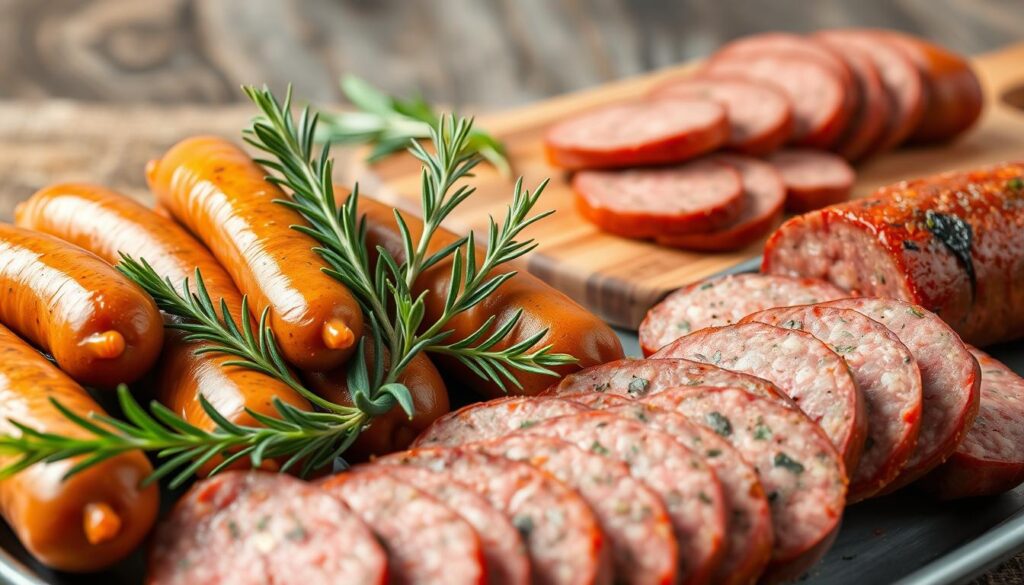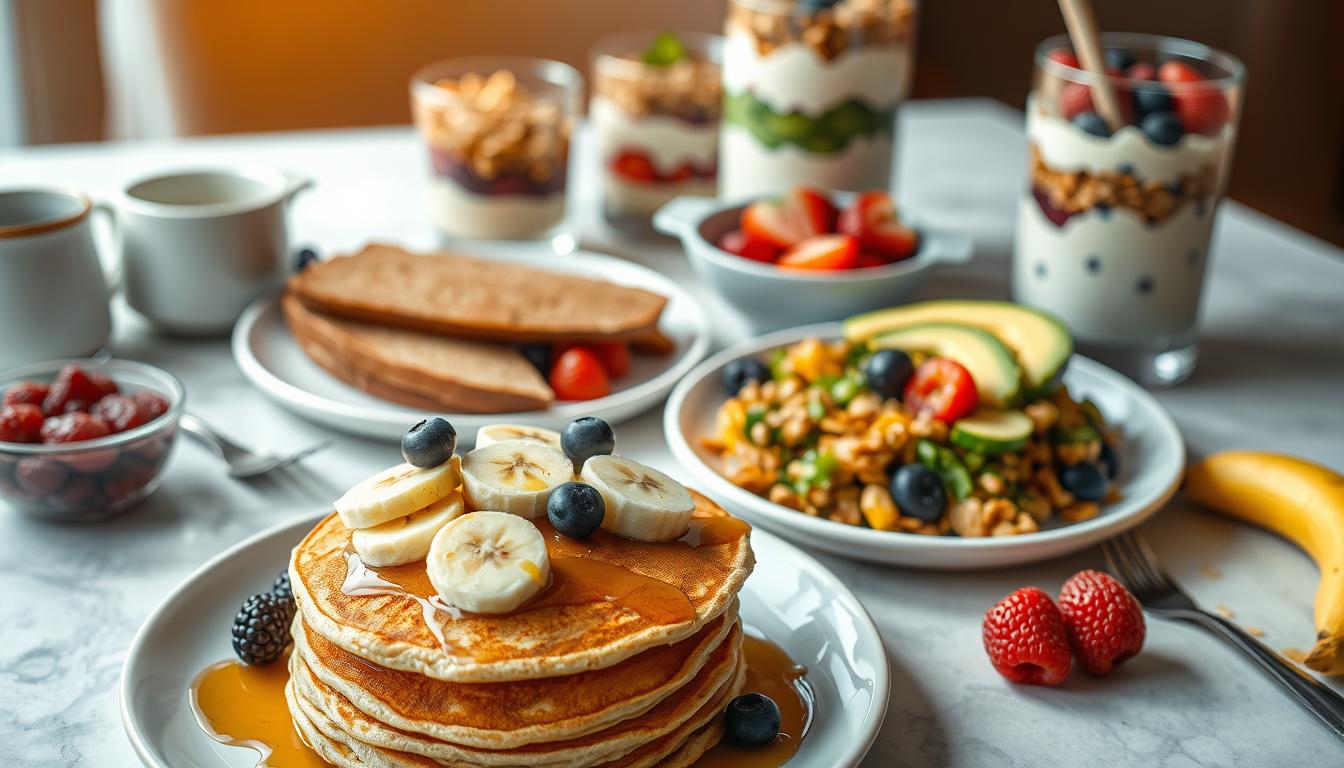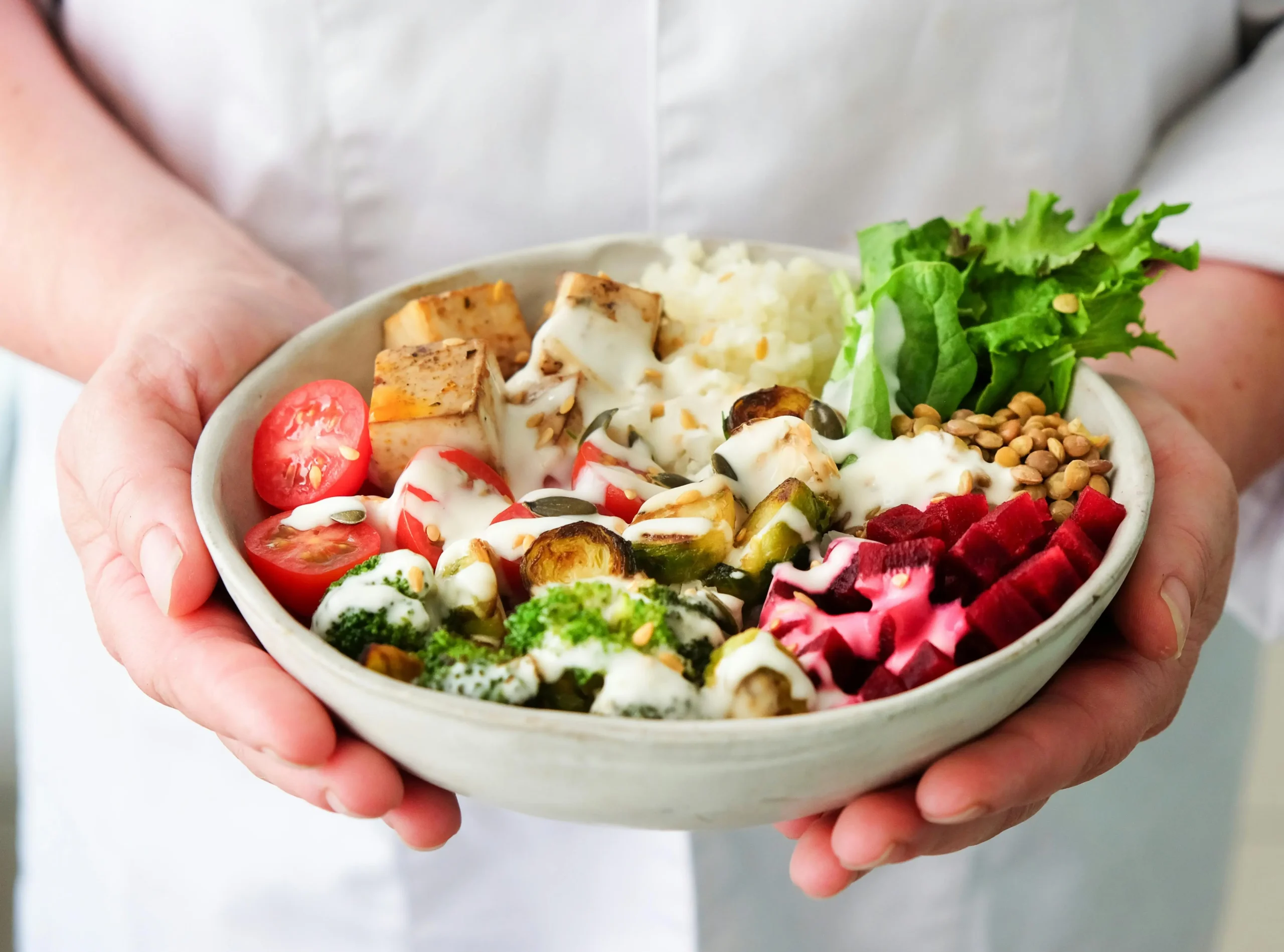Top-Rated English Breakfast Sausage Recipe: A Simple Guide for You

Imagine starting your day with the savory, meaty flavor of a traditional English breakfast sausage, perfectly cooked and bursting with juicy goodness. For many, this is a staple of British cuisine that evokes memories of hearty meals and warm hospitality.
The term “banger” was coined due to the sausage’s tendency to explode in the pan, a result of the breadcrumb used in the mix. This unique characteristic is part of the charm, making the experience of cooking and eating these sausages all the more engaging.
By following our simple guide, you’ll be able to create restaurant-quality sausages that will delight your family and friends, bringing a taste of British tradition to your table.
Key Takeaways
- Learn the authentic flavors and ingredients that make traditional English breakfast sausages unique.
- Understand the historical context behind the term “bangers” and their significance in British food culture.
- Discover a simple step-by-step guide to making high-quality sausages at home.
- Explore the perfect balance of meat, herbs, and traditional ingredients.
- Impress your family and friends with your newfound sausage-making skills.
What Makes English Breakfast Sausages Special
The quintessential English breakfast isn’t complete without a few sizzling sausages on the plate, but what makes them so special? English breakfast sausages have a rich history and a distinct flavor profile that sets them apart from other types of sausages.
The British Sausage Tradition
The British sausage tradition is deeply rooted in history and culture. Sausages have been a part of British cuisine for centuries, with various regions developing their own unique recipes and flavor profiles. The traditional English breakfast sausage is made with a combination of pork, seasonings, and breadcrumbs or rusk, which gives it a distinctive texture.
Difference Between English and American Breakfast Sausages
One of the main differences between English and American breakfast sausages lies in their texture and seasonings. English sausages typically contain breadcrumbs or rusk, which gives them a coarser texture, while American sausages tend to be finer in texture. The seasoning profiles also differ, with English sausages often featuring nutmeg, mace, and white pepper, whereas American sausages lean towards sage, thyme, and sometimes maple flavors.
| Characteristics | English Breakfast Sausages | American Breakfast Sausages |
|---|---|---|
| Texture | Coarser due to breadcrumbs or rusk | Finer texture |
| Seasonings | Nutmeg, mace, white pepper | Sage, thyme, maple flavors |
| Meat Content | Lower meat-to-filler ratio | Higher meat content |
Understanding the “Banger”
To truly appreciate English breakfast sausages, or ‘bangers,’ it’s essential to understand their origins and what makes them special. The term “banger” is believed to have originated during World War I, when sausages were made with a mixture of meat and fillers due to meat shortages. These sausages were more prone to bursting when cooked, hence the name “banger.”
Why They’re Called “Bangers”
The history behind the term “banger” is closely tied to the economic and culinary conditions of wartime Britain. As meat became scarce, sausage makers had to get creative with their ingredients, often using lower-quality meat and more rusk or breadcrumbs to bulk out their products. This resulted in sausages that were not only different in composition but also more likely to explode when cooked, earning them the colloquial name “bangers.”
Key Characteristics of Authentic English Sausages
Authentic English sausages are known for their distinctive texture and flavor, which are achieved through a combination of high-quality ingredients and traditional making techniques. A key feature is the use of coarsely ground pork with a good fat content, which contributes to their juicy texture. The inclusion of breadcrumbs or rusk helps to absorb excess moisture and adds to the sausage’s texture. Traditional English sausages are also seasoned with a blend of herbs and spices, including sage, thyme, nutmeg, mace, and white pepper, which gives them their characteristic flavor profile.
The meat-to-fat ratio is crucial in making sausages that are both flavorful and cook well. A good balance ensures that the sausages remain juicy and are less likely to burst during cooking. The coarse grinding of the meat also plays a significant role in the final texture of the sausage, making it more appealing to the palate.
Essential Ingredients for Top-Rated English Breakfast Sausage Recipe

The secret to making exceptional English breakfast sausages starts with understanding the essential ingredients. To create an authentic British breakfast sausage, you’ll need to focus on the right mix of meat, herbs, and other key components.
Meat Selection and Ratios
For traditional English breakfast sausages, a combination of pork meats is typically used. The ratio of lean meat to fat is crucial, with a common mix being around 70-80% lean pork and 20-30% fat. This balance ensures the sausages are juicy and flavorful.
Traditional Herbs and Spices
The characteristic flavor of English breakfast sausages comes from a blend of herbs and spices. Common ingredients include sage, thyme, salt, and black pepper. The exact proportions can vary depending on personal preference and regional traditions.
The Importance of Breadcrumbs or Rusk
For authentic British breakfast sausages, you’ll need 100g or ¾ cup pinhead rusk or panko breadcrumb. The breadcrumb is used to soak up extra liquid (typically 180g or ¾ cup ice cold water or chicken stock) added to help emulsify the sausage mixture. When cooked, the water in the breadcrumb forms steam, creating the characteristic texture.
- Understand why breadcrumbs or rusk are essential for texture and moisture retention.
- Learn the proper ratio of breadcrumbs to meat (typically ¾ cup per pound) for the perfect consistency.
- Discover how breadcrumbs help bind the sausage ingredients together.
- Explore alternatives like panko for home cooks who can’t source traditional British pinhead rusk.
Equipment You’ll Need

Making English breakfast sausages requires some essential equipment. To get started, you’ll need a few key tools to help you grind, mix, and stuff your sausages.
Meat Grinders and Alternatives
A meat grinder is a crucial piece of equipment for making sausages. You can choose between manual and electric grinders, depending on your preference and budget. If you don’t have a meat grinder, you can also use a food processor as an alternative.
Sausage Stuffers and Casings
For stuffing your sausages, you’ll need a sausage stuffer. We recommend the Super Deal Heavy Duty 5L Vertical Sausage Stuffer for its large capacity and durable construction. You’ll also need casings, which can be sourced from The Sausage Maker. Natural hog casings are a popular choice, and they require proper preparation before use.
Some key considerations when choosing a sausage stuffer include the capacity, material, and ease of cleaning. You can also explore alternatives like using a piping bag with a wide tip for small-batch sausage making.
Step-by-Step Top-Rated English Breakfast Sausage Recipe
Now that you have your ingredients and equipment ready, it’s time to start making your top-rated English breakfast sausages. This process involves several key steps that will help you create delicious, authentic sausages.
Preparing Your Meat Mixture
Begin by combining your selected meats in a large bowl. Ensure that the meats are well-mixed and that any fat is evenly distributed throughout the mixture. You can use a meat grinder or a food processor to achieve the desired consistency. The goal is to create a mixture that is coarse enough to retain texture but fine enough to hold together well.
Adding Seasonings and Breadcrumbs
Once your meat mixture is ready, it’s time to add the seasonings and breadcrumbs. Mix in your chosen herbs and spices thoroughly, ensuring they are evenly distributed throughout the meat. Add breadcrumbs or rusk to help bind the mixture and improve texture. Mix everything together until just combined – overmixing can lead to tough sausages.
Stuffing the Casings
With your meat mixture prepared, you can now start stuffing the casings. Attach the casing to your sausage stuffer and fill it with the meat mixture. Fill the casings evenly, being careful not to overfill or underfill them. You want the casings to be firm but not too tight.
Linking Your Sausages
To create your sausage links, twist the filled casings into uniform lengths. You can master the traditional technique of twisting sausages into links of approximately 4 inches each. Use a sausage pricker to remove any air bubbles from the links. For best results, chill the sausages overnight in the refrigerator to allow the flavors to develop and the texture to firm up. Place your links on a plate covered with a paper towel to prevent moisture from accumulating.
- Measure and mark your sausage rope before twisting to ensure consistent sizing of each link.
- Prick any visible air bubbles with a specialized tool or sterilized needle to prevent bursting.
- Explore different linking styles, from traditional twisted links to the distinctive coiled Cumberland style for presentation variety.
By following these steps and giving your sausages time to chill, you’ll be rewarded with delicious, homemade English breakfast sausages that are sure to impress. Your patience will pay off when you enjoy your perfectly cooked sausages at breakfast.
Cooking Methods for Perfect English Breakfast Sausages
Now that you’ve made your English breakfast sausages, it’s time to explore the best ways to cook them. Cooking your sausages properly is crucial to bringing out their full flavor and texture.

Traditional Pan-Frying Technique
Pan-frying is a classic method for cooking English breakfast sausages. It allows for a nice browning on the outside while cooking the inside thoroughly. To pan-fry, heat a skillet over medium heat, add a small amount of oil, and cook the sausages until they’re browned on all sides and cooked through.
Oven Baking Method
Baking your sausages in the oven is a convenient and healthier alternative to pan-frying. Simply place the sausages on a baking sheet lined with parchment paper and bake in a preheated oven at 375°F (190°C) for about 20-25 minutes, or until cooked through.
Grilling Options
Grilling adds a smoky flavor to your English breakfast sausages. To grill, brush the sausages with butter and place them under a medium-hot grill, cooking for 8 to 10 minutes per side. This method achieves a deliciously caramelized exterior while keeping the interior juicy.
Serving Your Homemade English Breakfast Sausages
Now that you’ve made your homemade English breakfast sausages, it’s time to serve them up in a traditional British style. A classic English breakfast is not complete without a few staple accompaniments that complement the savory flavor of your sausages.
Classic English Breakfast Pairings
A traditional English breakfast often includes a variety of dishes alongside the sausages, such as bacon, eggs, grilled tomatoes, and mushrooms. However, one of the most comforting and popular ways to enjoy your homemade sausages is as part of a Bangers and Mash. This beloved dish consists of sausages served atop creamy mashed potatoes and topped with a rich onion gravy.
Bangers and Mash
“For the ultimate comfort food, you really can’t beat a plate piled with creamy mashed potatoes, savory sausages, and drenched in a rich onion gravy.” This iconic British comfort food dish was listed as Britain’s most popular comfort food in 2009 by Good Food TV channel. To create this dish, focus on making properly seasoned, buttery mashed potatoes as the foundation. Then, top them with your homemade sausages and finish with a generous helping of onion gravy. You can also explore regional variations, such as adding peas or using different gravy styles.
Recipe Variations to Try
Once you’ve mastered the basic English breakfast sausage recipe, you can start experimenting with various flavor profiles. This allows you to create a range of sausages that can cater to different tastes and meal preferences.
Cumberland Style Sausages
Cumberland sausages are known for their distinctive spiral shape and robust flavor. To make Cumberland-style sausages, you can modify your basic recipe by adding a bit more ground black pepper and using a coarser texture for the meat mixture. Traditionally, Cumberland sausages are made with a higher proportion of pork and a specific blend of spices that includes dried sage and thyme. The key to achieving the characteristic flavor is to use a generous amount of seasoning and to ensure that the meat is not too finely ground.
| Ingredient | Traditional Cumberland | Basic English Breakfast |
|---|---|---|
| Pork Content | Higher proportion | Standard proportion |
| Ground Black Pepper | More generous | Standard amount |
| Dried Sage | Prominent | Present |
| Meat Texture | Coarser | Standard grind |
Herby Variations
For a more herby variation, you can increase the amount of teaspoon sage and add other fresh herbs like rosemary and thyme to your sausage mixture. This not only enhances the flavor but also gives your sausages a more vibrant and aromatic quality. You can experiment with different combinations of herbs to find the perfect balance for your taste. For instance, adding a teaspoon of dried parsley and a pinch of garlic powder can complement the sage and other herbs nicely.

When experimenting with new seasonings and herbs, it’s essential to balance the flavors so that no single ingredient overpowers the others. You can explore various regional herb combinations from across Britain to inspire your recipes. For example, a Lincolnshire-style sausage might feature a sage-forward flavor profile, while other regional variations might highlight blends featuring thyme and marjoram.
Troubleshooting Common Sausage-Making Problems
When making English breakfast sausages, several common issues can arise that affect the final product’s quality. Understanding these potential problems and how to address them is crucial for achieving the desired outcome.
One of the primary concerns when making sausages is maintaining the right consistency of the meat mixture. If the mixture is too dry and stiff, it may not stuff properly into casings. Conversely, a mixture that’s too wet can be difficult to handle and may result in sausages that burst during cooking.
Preventing Sausages from Bursting
Sausages can burst due to several reasons, including excessive pressure during stuffing, inadequate linking, or cooking at too high a temperature. To prevent bursting, ensure that your casings are not overfilled and that you’re cooking the sausages at a moderate heat.
Here’s a simple table to help you identify and solve common issues related to sausage bursting:
| Issue | Cause | Solution |
|---|---|---|
| Sausages bursting during cooking | Overfilled casings or too high cooking temperature | Stuff casings more loosely, cook at moderate heat |
| Difficulty linking sausages | Insufficient twisting or too wet mixture | Twist links more firmly, adjust mixture consistency |
Fixing Texture Issues
The texture of your sausages is largely determined by the consistency of the ground meat mixture and how it’s handled during preparation. If your sausages are too crumbly or dry, it may be due to overworking the meat or using a grinder that’s too coarse.
To achieve a smooth texture, ensure that your meat is at a consistently cold temperature and that you’re not over-mixing the ground mixture. Adjusting the ratio of lean meat to fat can also help in achieving the desired texture.
Storing and Freezing Your Homemade Sausages
Storing your homemade sausages properly is key to savoring them for months to come. Whether you plan to consume them within a few days or store them for longer periods, understanding the best storage practices is essential.
Refrigeration Guidelines
If you plan to use your homemade sausages within a short time, refrigeration is a suitable option. Ensure they are stored in an airtight container to maintain freshness. However, for longer storage, you’ll need to consider freezing.
Freezing for Long-Term Storage
Freezing is an excellent method for long-term storage. You can freeze the sausages either raw or after they’ve been poached. First, lay the sausages out on a tray and place it in the freezer until they’re frozen. Then, transfer them to a ziplock bag or airtight container for storage. Your homemade sausages can be stored in the freezer for up to 3 months. This method helps preserve their flavor and texture, ensuring they remain delicious when you’re ready to cook them.
Conclusion
Congratulations on mastering the art of homemade English breakfast sausage making, a skill that connects you to centuries of British culinary tradition.
By making sausages from scratch, you gain control over ingredients, allowing for healthier versions without preservatives. Your homemade sausages will elevate your breakfast table and impress family and friends with authentic British flavors. With practice, sausage making becomes easier, yielding delicious results. Experiment with different herbs and spices to develop your signature recipe using pork, and enjoy the fruits of your labor.






